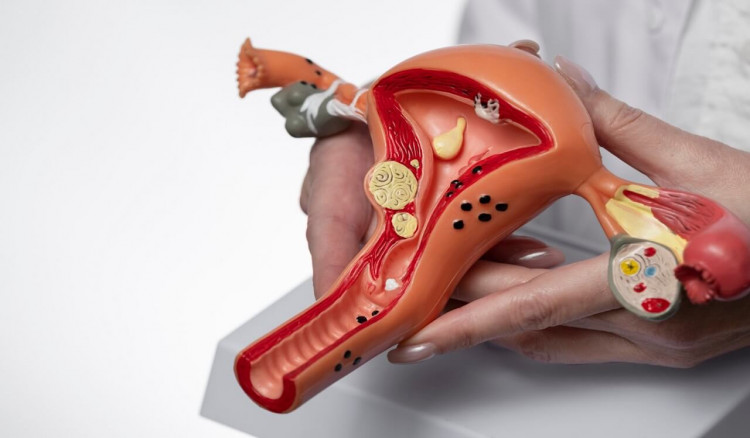
Types of Female Reproductive System Organs Disorders
In the past, infections of the ovaries, fallopian tubes and uterus were extremely common, causing considerable suffering for many women. But such infections no longer need pose a threat because all of them can be successfully treated with antibiotics.
Similarly, improvements in obstetrical methods have drastically reduced the number of injuries that in the past were often associated with pregnancy and childbirth.
Relaxed tissues or muscular injuries can cause disorders of the reproductive system, all of which can be treated either medically or surgically. Among these problems are: cystocele, a bulging disorder of the bladder owing to weakness of the vaginal wall; rectocele, a bulging of the rectum into the vagina; prolapse of the uterus, which pushes the cervix far down into the vagina; and displacement of the uterus.
TYPES OF FEMALE REPRODUCTIVE SYSTEM ORGAN DISORDERS
Leukorrhea
Leukorrhea—sometimes called “the whites”—is a persistent, nonbloody vaginal discharge. The condition is both common and troublesome. It is not a disease, but a symptom of a number of different illnesses, ranging from the trivial to the serious.
So, if you have leukorrhea—or any persistent discharge that is not colorless and that is accompanied by vaginal itching or irritation—consult your doctor.
Among the possible causes of leukorrhea are gonorrhea, polyps, lacerations of the cervix that sometimes occur during childbirth, or the irritation caused by an improperly fitted diaphragm. Occasionally leukorrhea is caused by some condition outside the genital tract—malnutrition, for example, or even pelvic congestion associated with heart disease.
One of the most common causes of leukorrhea is a one-celled microorganism known as Trichomonas vaginalis, which produces a yellowish discharge with an unpleasant odor. Trichomonas also causes itching of the external genitals and sometimes leads to chronic inflammation of the cervix.
It can be treated and cured. Because the organism can be passed on to the woman’s sexual partner, it may also be necessary for the doctor to prescribe medication for the man.
Leukorrhea may also be a symptom of moniliasis, a fungus disease that may affect other areas of the body besides the vagina.
Inflammation of the Cervix
A number of conditions can cause the cervix—the mouth of the uterus—to become inflamed. As mentioned above, an inflamed cervix may be associated with injuries during childbirth. Various kinds of irritations can also lead to cervical inflammation, or cervicitis.
Chronic cervicitis can be treated either by cauterization, which with only slightly discomfort removes or destroys the inflamed area, or by cryosurgery, which accomplishes the same result equally painlessly by the application of extreme cold.
An inflamed cervix should be treated promptly, because it is a fertile area for the development of cancer. Cervical polyps, a type of small tumor, should always be removed and examined under the microscope to see if they are malignant.
Fibroid Tumors
Sometimes harmless growth called fibroid tumors develop in the wall of the uterus. These growths may produce no symptoms whatever and may be detected only during a gynecological examination.
On the other hand, they sometimes cause menstrual difficulties, and if they grow large enough, they may interfere with the functioning of organs adjacent to the uterus. Small fibroids, which cause no trouble, can usually be left alone. Larger ones may require surgery.
Senile Vaginitis
Elderly women frequently develop vaginal infections as a result of the aging of the tissues; these infections manifest themselves by the appearance of a discharge. If you have such a discharge, consult your doctor. It can be relieved by treatment with a vaginal suppository, available by prescription.
Pruritus Vulvae
Itching of the genitals (pruritus vulvae) is frequently caused by leukorrhea and vanishes when it is corrected. But the itching can have other causes. It may be owing to irritation from urine (especially in diabetics), to skin diseases, or to irritation caused by chafing or nervous scratching of a minor inflammation.
Itching may also be connected with an allergic reaction. Your doctor can help you discover and eliminate the cause. Phenobarbital or other sedatives can reduce the nervous tension the itching creates.
Endometriosis
The special kind of mucous membrane that lines the walls of the uterus sometimes develops in other organs inside the pelvic cavity—for example, in the ovaries. This condition is known as endometriosis. It may lead to the creation of cysts—called ‘chocolate cysts’—which are formed from the blood produced in the tissue.
Endometriosis is frequently accompanied by pain in the lower abdomen, especially at the time of menstruation. In some cases, hormone therapy may cure the problem; in others, surgery may be necessary.
SURGICAL PROCEDURES FOR FEMALE REPRODUCTIVE SYSTEM ORGAN DISORDERS
Dilation and Curettage (D and C)
This surgical procedure involves dilation of the cervix and the scrapping of the internal walls of the uterus. It may be performed for a number of reasons. It is one accepted method of abortion. It is sometimes performed after a miscarriage to remove any embryonic tissue that may have remained.
If a woman experiences bleeding between her periods or excessive bleeding—especially after she has entered the menopause—dilatation and curettage may be used to relieve the condition and to obtain a tissue sample for further study. Uterine tumors and polyps may also be removed by curettage.
Hysterectomy
Hysterectomy means removal of the uterus, or womb. It is the only effective procedure for treating certain life-threatening conditions. But once the uterus has been removed, a woman is no longer able to bear children.
Hysterectomy should therefore never be performed unless it is absolutely necessary. It is imperative for the woman to have at least two medical opinions—including the opinion of a gynecologist—before undergoing the procedure.
Depending on the necessities of the individual case, one or both of the ovaries may be removed along with the uterus. Removal of the ovaries is likely to bring on premature symptoms of menopause. But if the ovaries remain intact, normal hormone production may continue after the operation, and no menopausal symptoms will appear until the normal age.






Share This Article: